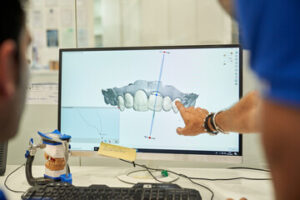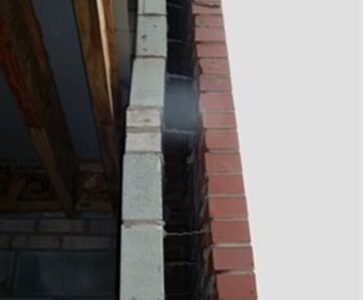Dentures Las Vegas have come a long way from the removable fake teeth that many of us remember from our grandparents’ days. Thanks to advancements in materials and fitting technology, these tooth replacement solutions now look and function more naturally than ever.
Here are five reasons why modern dentures are a better option than their predecessors:

They Look More Natural
If you’re missing one or more of your natural teeth, don’t think your only option is the clunky false teeth of your grandparents’ generation. Thanks to the latest advancements in dental technology, modern dentures are more comfortable and look more natural than ever before.
The key to a natural-looking smile is the materials used to create the denture base and the replacement teeth. Traditional dentures use acrylic resin to mimic gum tissue, while higher-end options might include porcelain. Porcelain is a durable material that closely resembles the luster and translucency of natural tooth enamel.
When crafted with care, the most advanced dentures can be indistinguishable from your natural teeth. This level of realism can help reduce the stigma associated with false teeth and boost confidence. It can also help you feel more at ease when eating and speaking.
Whether you need full or partial dentures, the best way to find out if they’re right for you is to visit a qualified dentist with experience designing and fitting these high-tech prosthetics. By working together, you and your dentist can choose the right type and shade of teeth that complement your facial features and skin tone for a perfectly personalized smile.
If you’re interested in reclaiming your smile with the most up-to-date denture technology, schedule a consultation today! Our friendly and experienced team can provide you with the information you need to decide if these innovative new dentures are right for you. Contact us online to book your appointment today. We’re looking forward to helping you regain your radiant smile!
Unlike the clunky dentures of the past, today’s durable dental prosthetics are comfortable, stable, and lifelike. A perfect blend of art and science, advanced materials, and digital dentistry innovations like 3D printing are helping to create dentures that are almost indistinguishable from natural teeth.
The Benefits Of Modern Dentures
When teeth are lost, the jawbone begins to deteriorate. To maintain its density, the bone needs stimulation. Without that stimulation, the bone will begin to resorb, and this can cause the cheeks and lips to collapse, leading to a sunken appearance. By filling in the gaps in the smile, modern dentures prevent these facial muscles and structures from collapsing and can restore a more youthful appearance.
Additionally, modern dentures can help you speak clearly and chew comfortably. This can be a significant improvement over the difficulty you may experience when you are missing teeth. In addition, modern dentures can help prevent the shifting of remaining natural teeth into the gaps left by tooth loss.
There are two common types of dentures: complete and partial. A complete set of dentures replaces all of your missing teeth, while a partial denture can be used to fill in the gaps left by missing teeth and can also be used as an anchor for dental implants.
Both types of dentures are made from a durable acrylic resin and designed to be comfortable in the mouth. They can be molded to fit the shape of your gums for a more natural appearance and are easily maintained with proper care. They can be brushed with toothpaste and rinsed with a special denture cleanser to remove plaque and food particles. They should be kept in a water-filled glass or basin overnight to keep them moist and prevent them from drying out or warping.
They Are More Affordable
For millions of Americans, dentures are a necessary step in the journey toward restored confidence, facial aesthetics, and essential functionality. Many factors can contribute to tooth loss, from health conditions like diabetes to unforeseen accidents that leave the mouth vulnerable. Fortunately, with today’s advanced dentistry, it’s easier than ever to fill in the gaps.
Modern materials and advancements in denture design have made them more affordable for a wider range of patients. While it’s important to remember that not all dentures are created equal, and cheaply-made models can look less than ideal, the additional cost of investing in high-quality teeth is well worth the result.
In addition to their aesthetic appeal, newer dentures are better able to support natural teeth. Partial dentures are designed to clasp onto remaining teeth, preventing them from shifting or falling out over time. While they can create pressure on the natural teeth they attach to, this is usually minimal and should be prevented by practicing good oral hygiene habits.
Regardless of the type of denture you choose, we work to ensure that they fit correctly for optimal comfort and function. This requires regular dental checkups to identify any issues with the appliance and ensure that the replacement teeth are a good match for your existing bite.
While basic health insurance (Parts A and B) typically do not cover dental care, add-on Advantage Plans often include all or part of the cost of complete dentures. You can also use funds from health reimbursement accounts and flexible spending accounts to help offset the cost of new teeth. With these options available, it is now easier than ever to restore your smile and reclaim your quality of life.
They Are More Comfortable
While many people think of dentures as the plastic teeth their grandparents wore, this is no longer true. Modern dentures are more natural-looking and comfortable to wear than ever before. They are now one of the most popular tooth replacement options available!
Whether you’re missing several or all of your natural teeth, dentures can provide an effective and affordable solution. They help restore your smile but also help you eat and speak normally and protect remaining healthy teeth from shifting into gaps caused by lost or decaying teeth.
Dentures are commonly made of a hard, acrylic material, but today’s dentists can work with patients to customize the shape and color of their denture base for improved comfort, appearance, and durability. Denture teeth are then securely attached to the base for a secure fit and a lifelike look.
While it’s still important to take good care of your dentures and schedule regular visits to your dentist for checkups, cleaning, and repairs, modern dentures are designed with durability in mind. Using proper oral hygiene practices (brushing with a soft-bristled brush and non-abrasive denture cleaner) will keep them looking and functioning at their best.
If you’re interested in learning more about the latest advancements in dental technology and how they can benefit your oral health, contact us today! We’re proud to offer high-quality, comfortable, and natural-looking dentures that can give you a confident, beautiful smile. We can even help you find the perfect fit for your lifestyle and budget! Schedule a consultation with us today to see how our prosthodontic experts can improve your oral health and your smile with dentures!
They Are More Versatile
Modern dentures are not only more comfortable than their traditional counterparts but also more versatile, allowing them to fit into the diverse needs of patients across all ages. For example, they can be used to replace a full set of teeth or just a few, and can either serve as temporary or permanent prosthetics. They are also easy to maintain, requiring minimal maintenance routines that can be easily adapted to suit the patient’s lifestyle.
This versatility makes them a highly appealing choice for those who want to preserve their natural smiles, especially as they age. Additionally, they can also be used to support other dental treatments, such as dental implants. This means that they can help provide a solid foundation for restoring natural function and preventing complications like gum disease.
As with any dental treatment, it is important to consult a dental professional before deciding on the best solution for your unique needs. With the right dentist and proper care, you can enjoy your new dentures for years to come.
It is also worth mentioning that the quality of your dentures will have an impact on how well they wear and feel. You will want to ensure that they are made of high-quality materials and that they are properly fitted to your mouth. This will help them last longer and prevent any discomfort or irritation. Additionally, it is a good idea to store your dentures properly when they are not in use to reduce the likelihood of them breaking or becoming damaged. Regular cleaning and careful handling will also help keep them looking their best and feeling their most comfortable.
